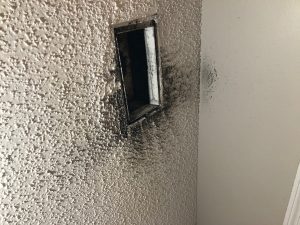Directly From The EPA website.
Knowledge about air duct cleaning is in its early stages, so a blanket recommendation cannot be offered as to whether you should have your air ducts in your home cleaned. The U.S. Environmental Protection Agency (EPA) urges you to read this document in it entirety as it provides important information on the subject.
Duct cleaning has never been shown to actually prevent health problems. Neither do studies conclusively demonstrate that particle (e.g., dust) levels in homes increase because of dirty air ducts. This is because much of the dirt in air ducts adheres to duct surfaces and does not necessarily enter the living space. It is important to keep in mind that dirty air ducts are only one of many possible sources of particles that are present in homes. Pollutants that enter the home both from outdoors and indoor activities such as cooking, cleaning, smoking, or just moving around can cause greater exposure to contaminants than dirty air ducts. Moreover, there is no evidence that a light amount of household dust or other particulate matter in air ducts poses any risk to your health.
You should consider having the air ducts in your home cleaned if:
There is substantial visible mold growth inside hard surface (e.g., sheet metal) ducts or on other components of your heating and cooling system. There are several important points to understand concerning mold detection in heating and cooling systems:
- Many sections of your heating and cooling system may not be accessible for a visible inspection, so ask the service provider to show you any mold they say exists.
- You should be aware that although a substance may look like mold, a positive determination of whether it is mold or not can be made only by an expert and may require laboratory analysis for final confirmation. For about $50, some microbiology laboratories can tell you whether a sample sent to them on a clear strip of sticky household tape is mold or simply a substance that resembles it.
- If you have insulated air ducts and the insulation gets wet or moldy it cannot be effectively cleaned and should be removed and replaced.
- If the conditions causing the mold growth in the first place are not corrected, mold growth will recur.
Ducts are infested with vermin, e.g. (rodents or insects).
Ducts are clogged with excessive amounts of dust and debris and/or particles are actually released into the home from your supply registers.
If any of the conditions identified above exists, it usually suggests one or more underlying causes. Prior to any cleaning, retrofitting, or replacing of your ducts, the cause or causes must be corrected or else the problem will likely recur.
Some research suggests that cleaning heating and cooling system components (e.g., cooling coils, fans and heat exchangers) may improve the efficiency of your system, resulting in a longer operating life, as well as some energy and maintenance cost savings. However, little evidence exists that cleaning only the ducts will improve the efficiency of the system.
You may consider having your air ducts cleaned simply because it seems logical that air ducts will get dirty over time and should be occasionally cleaned. Provided that the cleaning is done properly, no evidence suggests that such cleaning would be detrimental. EPA does not recommend that the air ducts be cleaned routinely, but only as needed. EPA does, however, recommend that if you have a fuel burning furnace, stove or fireplace, they be inspected for proper functioning and serviced before each heating season to protect against carbon monoxide poisoning.
If you do decide to have your air ducts cleaned, take the same consumer precautions you normally would in assessing the service provider’s competence and reliability.
Air duct cleaning service providers may tell you that they need to apply chemical biocide to the inside of your ducts as a means to kill bacteria (germs) and fungi (mold) and prevent future biological growth. They may also propose the application of a “sealant” to prevent dust and dirt particles from being released into the air or to seal air leaks. You should fully understand the pros and cons of permitting application of chemical biocides or sealants. While the targeted use of chemical biocides and sealants may be appropriate under specific circumstances, research has not demonstrated their effectiveness in duct cleaning or their potential adverse health effects. No chemical biocides are currently registered by EPA for use in internally-insulated air duct systems.
Whether or not you decide to have the air ducts in your home cleaned, preventing water and dirt from entering the system is the most effective way to prevent contamination.
Benefits of Air Conditioning Duct Cleaning
From the NADCA National Duct cleaners Association
Indoor air quality is one concern that homeowners have when they decide to investigate air duct cleaning. Your heating and cooling system is the lungs of your home. The system takes air in and breathes air out.
Through normal occupation in a home, we generate a great deal of contaminants and air pollutants, such as dander, dust, and chemicals. These contaminants are pulled into the HVAC system and re-circulated 5 to 7 times per day, on average. Over time, this re-circulation causes a build-up of contaminants in the duct work.
While dirty ducts don’t necessarily mean unhealthy air in your home, school or workplace, they may be contributing to larger health issues or harboring contaminants that could cause serious problems for people with respiratory health conditions, autoimmune disorders or some environmental allergies.

